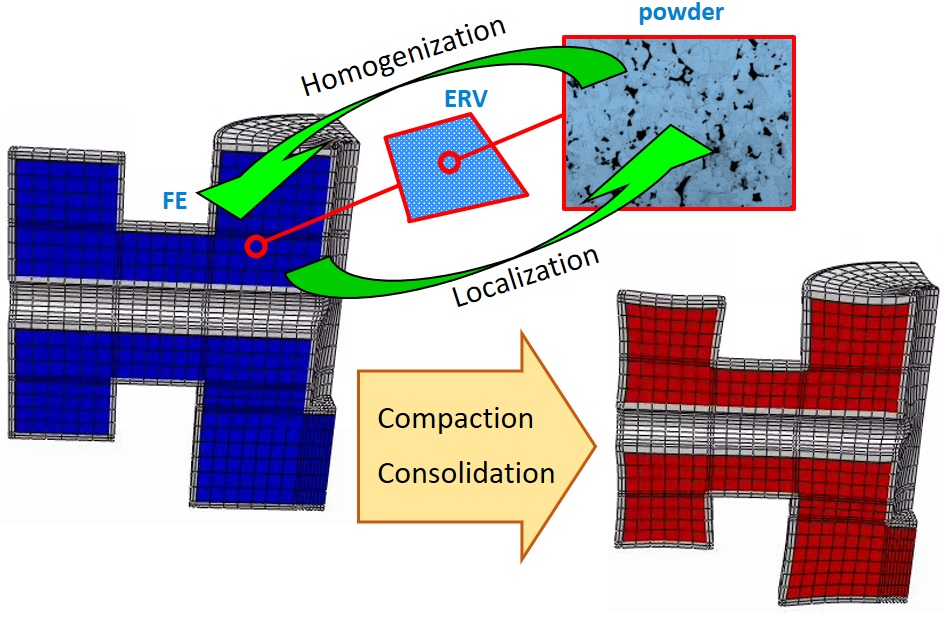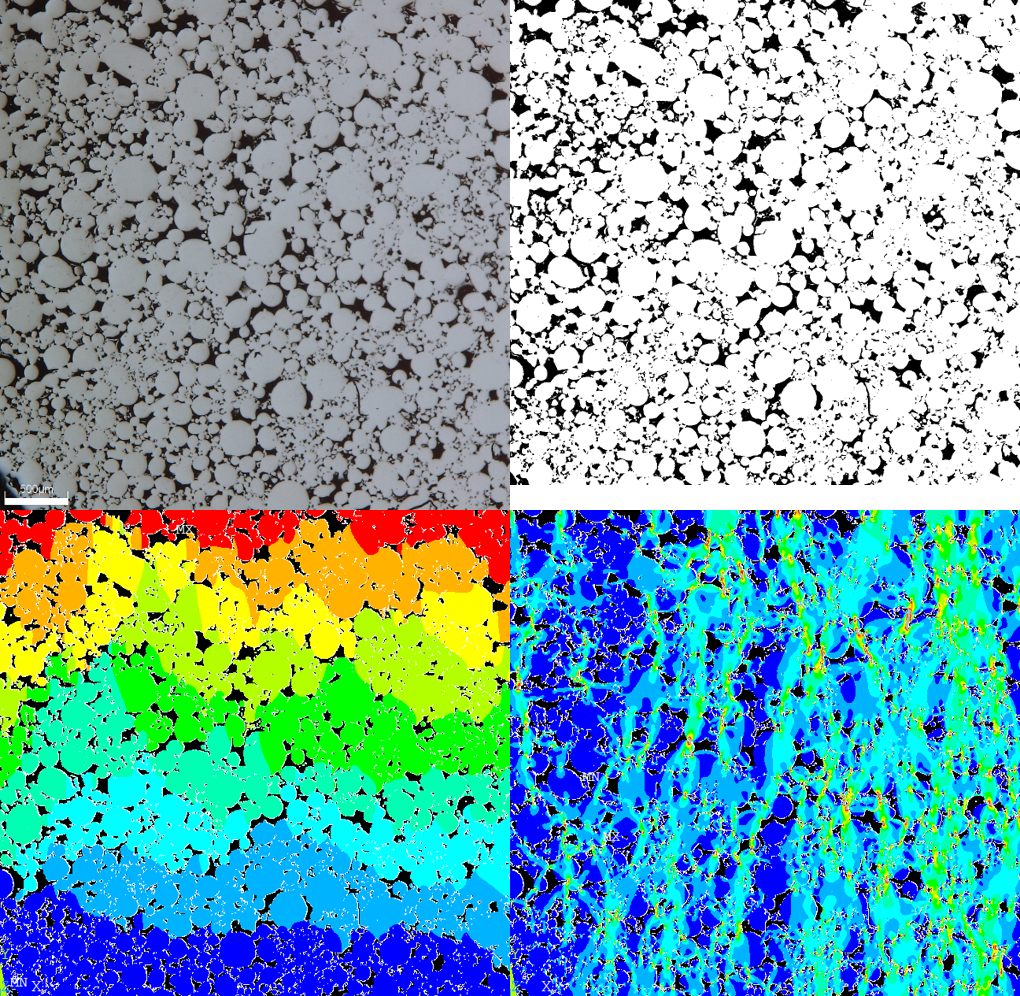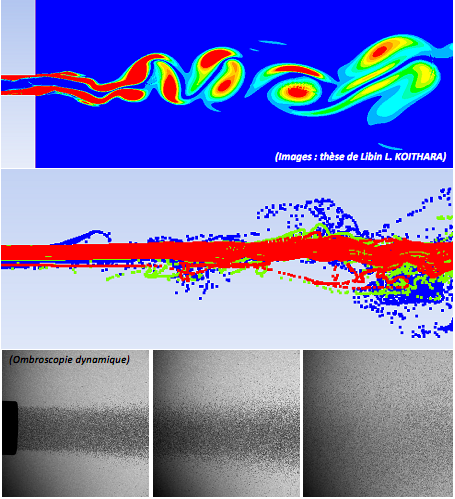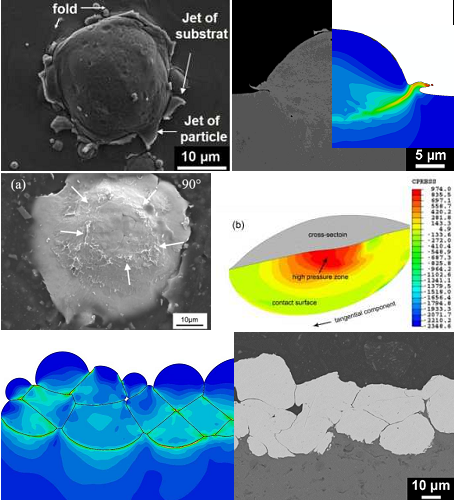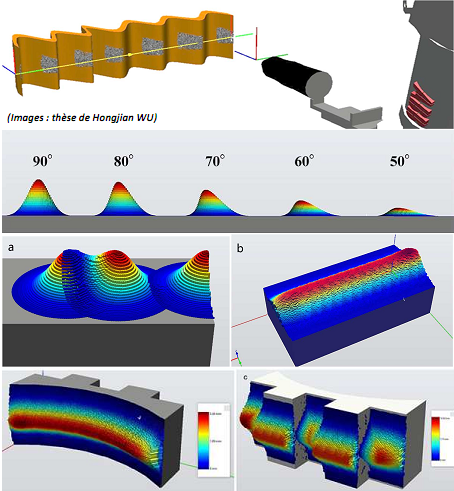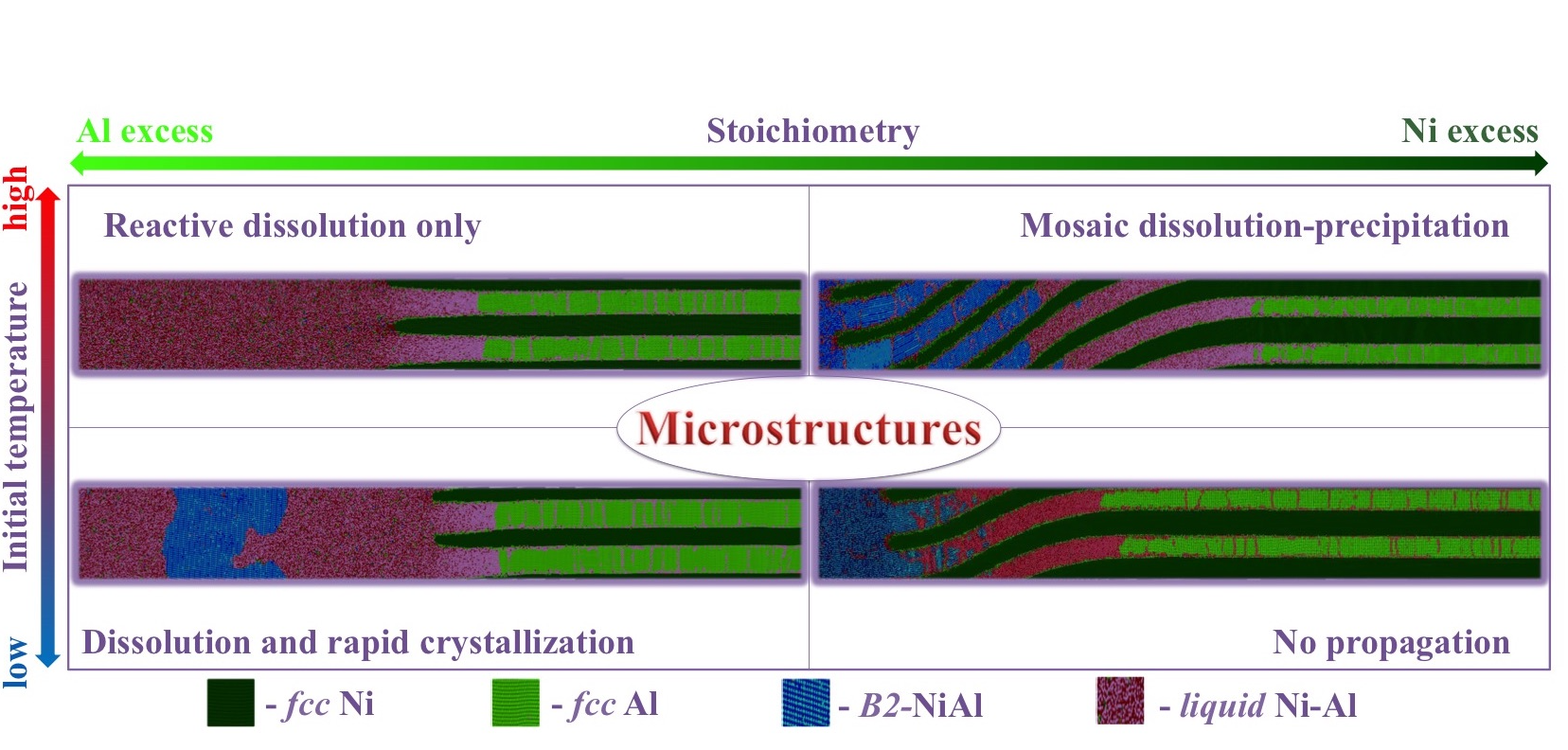Numerical modeling and simulation (from the atom to the process)
Florence BARAS
Head
fbaras[at]u-bourgogne.fr
Phone : +33 (0)3 80 39 61 75
In addition to the experimental work associated with each research theme in the PMDM department, we are developing a process and / or process modeling approach in order to improve the control of properties as a function of the microstructure.
The range of methods is very wide.
At the macroscopic scale:
- finite element method for a multi-physical approach and a description of the mechanical behavior (ANSYS, Fluent, COMSOL multiphysics, Abaqus,…)
At the microscopic scale:
- Molecular dynamics (EAM potential method for metallic interactions, ReaxFF for oxidation reactions,…)
At the mesoscopic scale:
- Discrete Element Method (LIGGHTS)
- Smoothed Particle Hyrodynamics
Process simulations:
- predictive modeling of additive manufacturing by thermal spraying
- design of containers for hot isostatic compression (CIC)
Materials :
- metals
- alloys (steel, Ti, Ni,…)
- oxidation of metallic materials,
- high entropy alloys,…
Modeling of powder compaction
By finite element techniques, we model the deformation mechanisms that occur during the compaction of powders under high pressure. The goal is to design the shape of the containers that will allow to obtain a part as close as possible to the shape desired by CIC (hot isostatic compression) and to obtain optimal consolidation at all points. This requires establishing the constitutive laws for a VER of pulverulent material allowing to correctly describe the scale transition. The calculation of local stresses and temperatures makes it possible to describe the microstructural changes occurring in the powder during compaction.
Contact: Jean-Philippe Chateau-Cornu (Dijon)
Estimation of effective properties of materials from micrographs
In this type of computation, it is the image of the structure itself which constitutes the mesh: each pixel is converted into a square element for a modeling by finite elements which will be treated by the ANSYS code.
A partially sintered stainless steel powder (top left) and the corresponding binary image (top right). A vertical displacement field obtained for a virtual stress of vertical compression type (bottom left) and the corresponding stress field (Von Mises) (bottom right).
The model makes it possible (for example) to evaluate the ratio between the modulus of elasticity of the partially sintered material, relative to the modulus of elasticity of dense material of the same nature.
Contact : Rodolphe Bolot ( Creusot)
Process simulation
Understanding, controlling and predicting the phenomenological behavior of cold spray additive manufacturing allows for the continuous development of several technological solutions capable of integrating innovative materials and their performance. The PMDM site UTBM team is working on this issue by taking advantage of modeling and numerical simulation to optimize the operation of this additive method by mastering all of the interactions between process parameters and additive growth of matter during the continuous collision of micrometric powders on a target substrate. Simulation work includes three distinct but closely related aspects: controlling the kinetics of material growth as a function of the movement and trajectory of the projection nozzle, the phenomenological behavior of compressible supersonic flow inside and outside the nozzle and its kinematic and thermal interactions with micrometric powders, and the coating formation mechanisms produced by ballistic collision and the high deformation rates when these prevail as in the case of deformable materials. The “process simulation" thematic thus develops predictive multi-physical models which are used to characterize the phenomena governing additive manufacturing by thermal projection and their consequences on the responses of the material studied during deposit formation.
Contact : Rija-Nirina Raoelison, Sihao Deng (Sevenans)
Reactions at interfaces in metallic nanoscale multilayers
We study the self-sustaining reactions that develop in metallic nanometric multilayers by modeling on a microscopic scale. Molecular dynamics are used to detect the elementary mechanisms associated with mass and heat transfer, dissolution and mixing, phase transitions at the nano scale. The aim of this modeling is to understand the relationship between the microstructure and the properties of the reagent front. These very energetic materials are applied for welding processes of temperature-sensitive materials.
Contact : Florence Baras, Olivier Politano (Dijon)
Estimation of stress fields in welded joints, from calculations on micrographs
For this type of calculation, it is the image of the micrograph of the assembly (after processing) which serves as a mesh for finite element calculations (FEM).
The case presented concerns that of a Ti6Al4V / stainless steel assembly produced via a vanadium insert. This insert makes it possible to avoid the formation of fragile phases (in particular FeTi and Fe2Ti) generally observed in direct welding. In return, this assembly requires the production of 2 separate weld beads. The micrographs of the 2 individual cords are presented on the top. The assembly of 5 materials used for the calculations (each color corresponds to a different material) is presented on the image of the medium. Finally, the sigma_z component (Pa) of the stress tensor (component perpendicular to the section) illustrates the results obtained by considering the thermal contraction of the materials of the 2 beads when they are cooled to room temperature. The results indicate the presence of a stress in tension (+) in the 2 cords, balanced by a stress in compression (-) in the non melted basic materials. Note however that the level of constraint remains sensitive with respect to the behavior law considered for materials (here bilinear laws). In particular, the consideration of an elastic limit of 1GPa for TA6V (and for the TA6V / vanadium bead) explains the presence of a stress level as high as 1.2 GPa in the bead in question.
Contact : Rodolphe Bolot (Creusot)
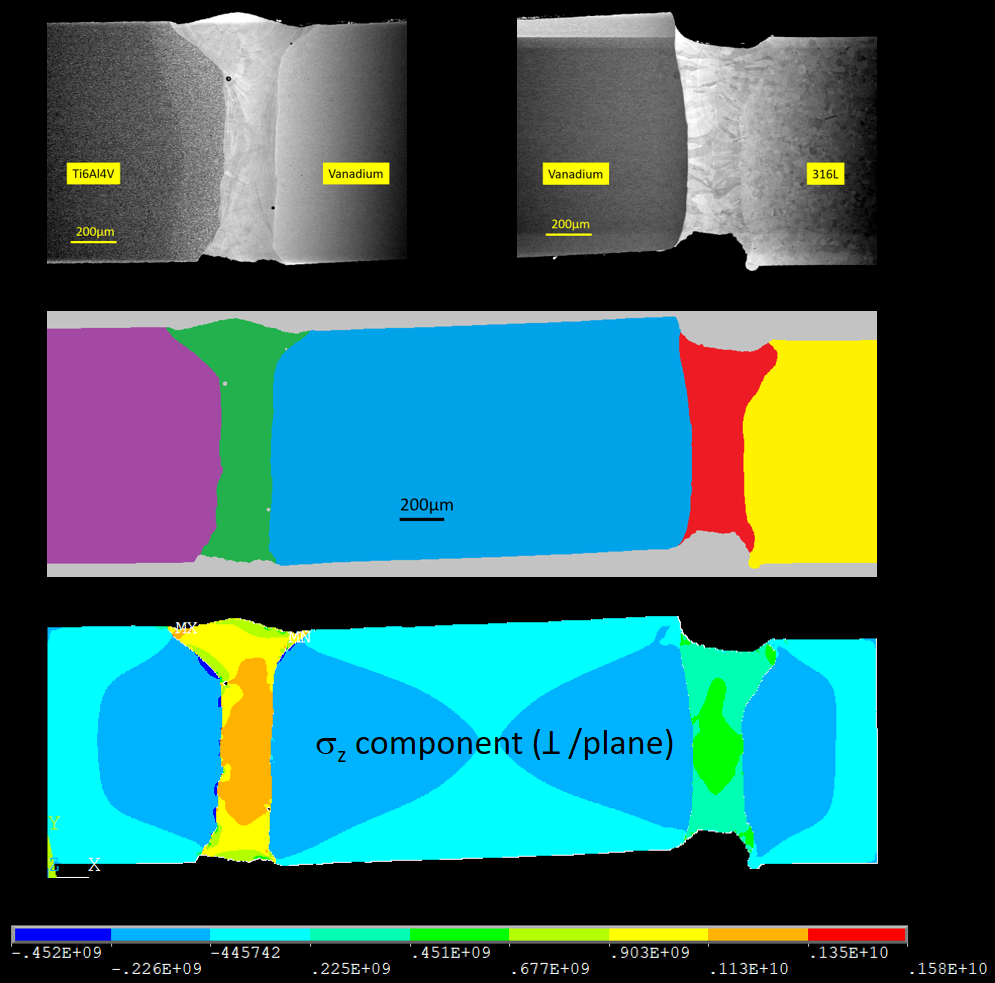
- kc_data:
- a:8:{i:0;s:0:"";s:4:"mode";s:2:"kc";s:3:"css";s:0:"";s:9:"max_width";s:0:"";s:7:"classes";s:0:"";s:9:"thumbnail";s:0:"";s:9:"collapsed";s:0:"";s:9:"optimized";s:0:"";}
- kc_raw_content:
